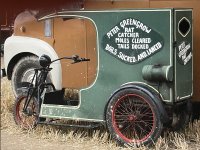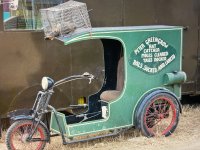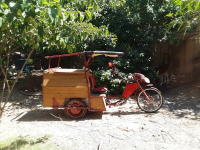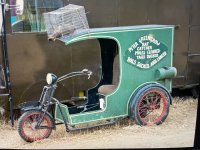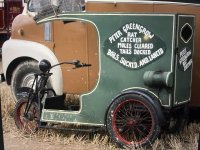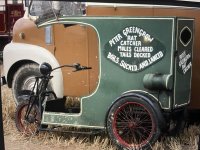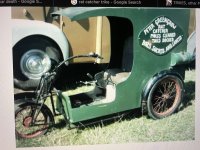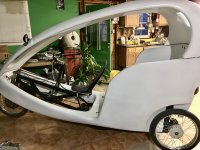A hubmotor can work....depends on how much acceleration you want, and how fast you want to go.
Example:
My SB Cruiser trike
This thing replaces Delta Tipper...er, Tripper v1.0, whcih was cannibalized to build it. https://endless-sphere.com/forums/viewtopic.php?f=2&t=22720 It's mostly Dogman's fault ;) ...er, inspiration, as he suggested it as a joint build for his trip out here this year. Tiny and Yogi discuss...

endless-sphere.com
View attachment 331803
View attachment 331802
View attachment 331804
is pretty heavy (probably weighs what you expect yours plus you to when I'm carrying enough groceries, dog food, or a dog), and it takes 3-4kw to accelerate it to 20mph on the flat Phoenix roads in about 4-5 seconds when it's just me on it (total 400-500lbs?), probably a second or two longer with the extra weight; I'm using two hubmotors in what amount to 22" or so wheels, each with it's own controller, but both run at the same time with the throttle signal out of the Cycle Analyst that reads my pedal sensor so I can just pedal to control the speed directly. (it also has a throttle but that's only used to get started if hurts too much to start by pedalling, or I can't pedal at all for whatever reason).
In an earlier lighter version, probably a hundred pounds less, I used a single front hubmotor in a 26" wheel with probably 1500w of power max; acceleration wasn't as good, though I could still do 20MPH. (probably could've done faster but don't need more, and trikes like these don't usually handle that well at higher speeds (many are terrible even at 15MPH). This single motor was pushed hard enough to heat it up a lot, but it was an old heavy duty motor...I did eventually break it's axle, though (after I moved it to the rear into a smaller wheel).

I use hubmotors because it makes things simpler and potentially more reliable than a chain drive from a frame-mounted motor to the wheel (which I have done before, on the early versions of CrazyBike2). But for other reasons, primarily roadside tire repair time/work, a future version of the trike is going to use regular wheels driven via chain from frame mounted motors, once I decide on a specific design and have time to build it).
If you don't need much speed, you can get "slower wind" hubmotors intended for trikes, like these
Special parts for converting a Traditional upright Tricycle to Electric. Simple and durable front w/ 48 volt Lithium battery from a USA company: the best val...

www.ebikekit.com
which will spin slower but give more torque than a typical hubmotor in the same size wheel at the same voltage.
Or you can use small diameter wheels for the typical hubmotors, which do a similar thing in a different way.
Or even do both, trike-kit motor in small wheel, for even lower speed but higher torque.
Geared hubmotors like the Gmac from ebikes.ca may be even more efficient at the lower speed / startup from a stop. (suggesting the Gmac specifically because it can spin both directions, unlike typical geared hubmotors, so you can use it to back up as well as go forward, like the DD hubmotors in those trike kits).


